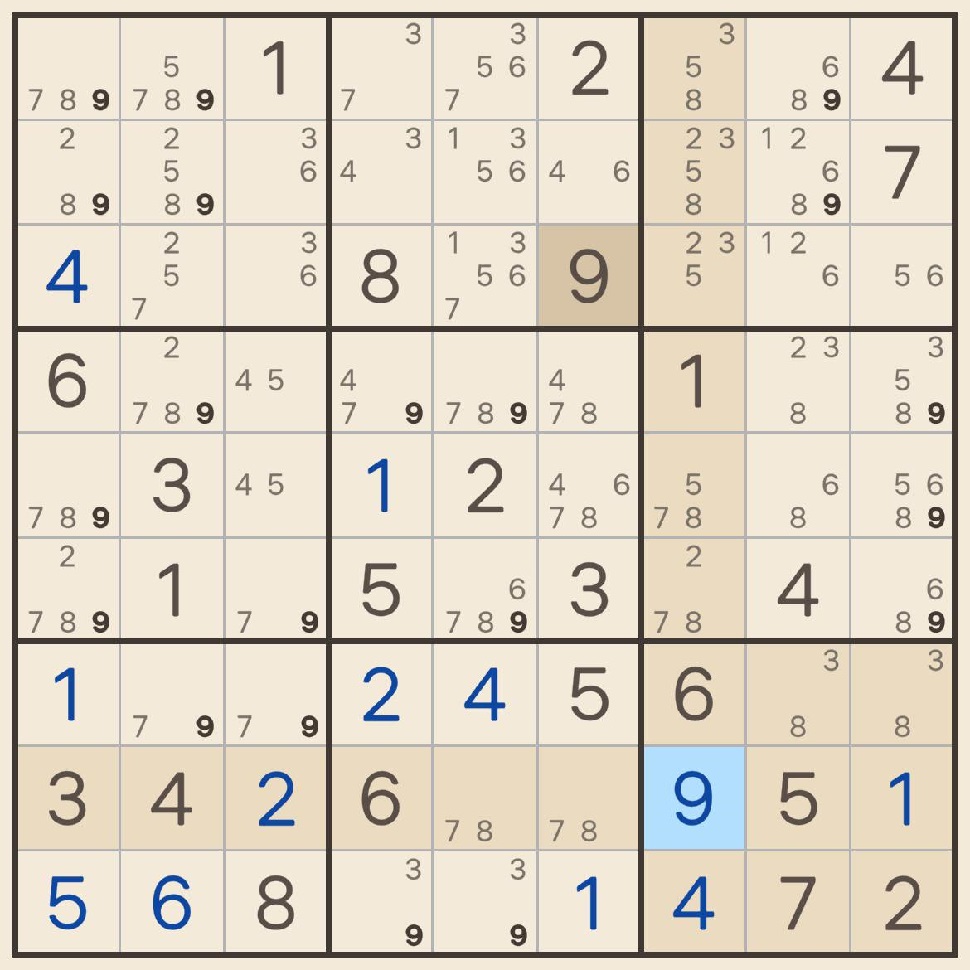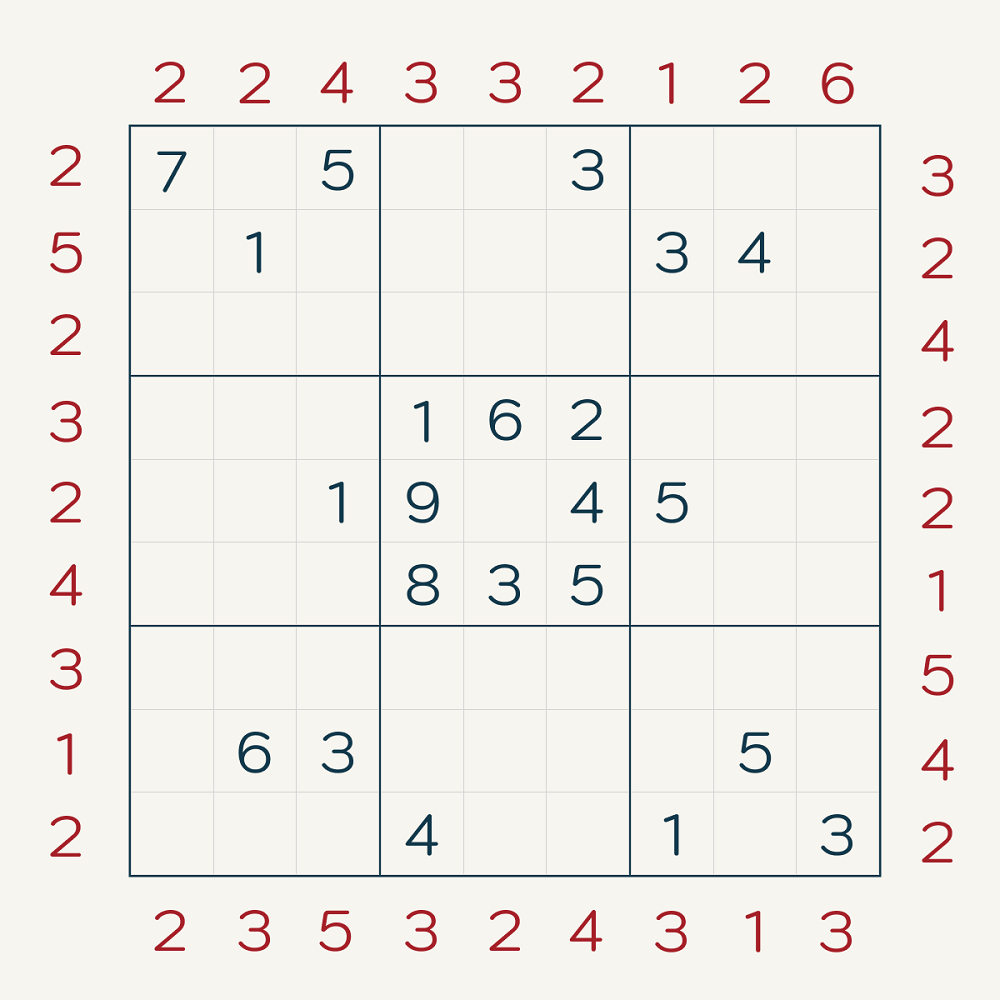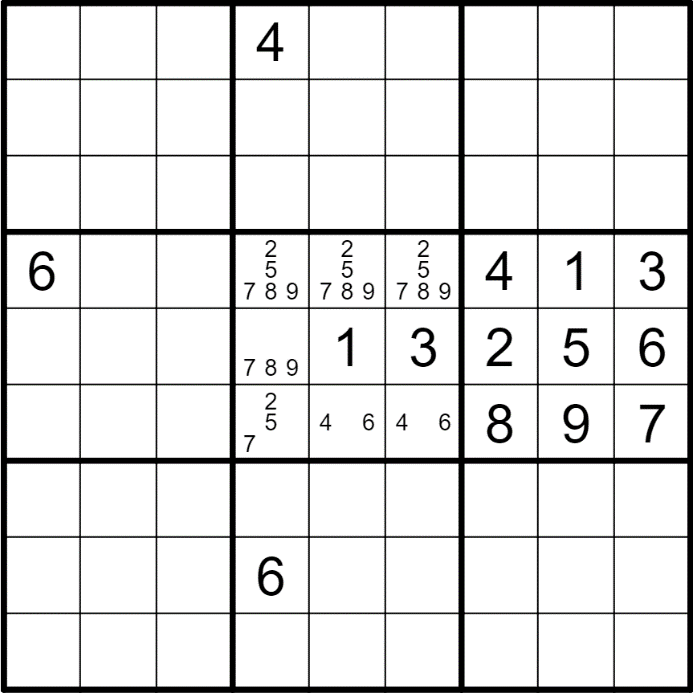Advanced Strategies to Master Sudoku Puzzles
Sudoku challenges many with its intricate puzzles and the need for keen logical thinking. But fear not, advanced strategies exist that can take your Sudoku-solving skills to the next level. These techniques move beyond the basic ‘one possibility per cell’ approach. They can help you tackle even the most daunting grids.
Embracing advanced Sudoku solving techniques requires patience and practice. You’ll learn to spot patterns and possibilities that are not immediately obvious. These include identifying special configurations of numbers and using these to eliminate other possibilities.
Let’s delve deeper into some of these advanced strategies:
- The X-Wing Method zeroes in on rows and columns, bypassing subgrid blocks. It finds a specific number that fits only in two spots across parallel lines.
- Swordfish Technique expands on this idea. It uses three lines instead of two and allows for the elimination of digits based on the alignment of potential cells.
- Forcing Chains requires you to follow a sequence of eliminations. This chain reaction can reveal the number for a particular cell.
- XY Wing Method focuses on cells interconnected with two possibilities. Observing these connections can help you remove incorrect numbers.
- Naked Pairs are about spotting two cells with the same number pair within a group. This can simplify your choices elsewhere.
- Hidden Pairs might be more subtle, concealed amongst other candidates. Spotting these can reduce complexity significantly.
- The Pointing Pair Technique revolves around pinpointing a number’s location within a block. Doing so affects choices in the entire row or column.
- Nishio Strategy takes a gamble with a trial-and-error method. Pick a candidate and see where it leads; it’s a riskier move but can yield results when stuck.
Each of these advanced Sudoku solving techniques offers a way to progress through the puzzle when the going gets tough. They can often prove crucial when facing particularly challenging Sudoku puzzles. Remember, the key to mastery is practice. Use these strategies often, and you’ll find yourself breezing through Sudoku puzzles with greater ease.

The X-Wing Method Explained
The X-Wing method stands out as an advanced sudoku solving technique. It may seem daunting at first, but understanding it can be a game-changer. Let’s break it down into simpler terms.
The core idea is about spotting patterns in rows and columns. This method does not involve subgrid blocks directly. It targets a specific digit that only fits in two possible spots on the grid. But the trick is, these spots lie in parallel rows or columns, which forms the shape of an ‘X’.
Here’s a step-by-step guide to use the X-Wing strategy:
- Identify a digit that has only two possible positions in two separate rows.
- Draw imaginary lines across these rows, extending through the possible positions of your chosen digit.
- Repeat the process for columns as well.
- Look for intersecting points where these imaginary lines meet within the grid.
- If you find a solid ‘X’ shape, you can eliminate this digit from consideration in other cells along those intersecting lines.
This approach narrows down the possible numbers you can place in the remaining cells. It’s especially helpful when the puzzle gets tougher and the usual tactics don’t cut it.
The X-Wing method requires a sharp eye to detect the right pattern and make a strategic elimination. Practice it often, and it will become a powerful tool in your sudoku solving repertoire.
Swordfish Technique: A Step Up from X-Wing
The Swordfish technique is an advanced level up from the X-Wing method. While the X-Wing focuses on two rows or columns, the Swordfish pattern targets three, widening the scope for accuracy. Here’s how you can apply the Swordfish strategy to your game:
- Begin by scouting for a number that features only in three places along two different rows.
- Do the same across columns; find sets of three numbers aligning with the rows.
- Connect these numbers mentally to form a grid-like swordfish pattern.
- Where the pattern intersects, remove the specific number from other cells in those columns.
- Double-check that the numbers form a consistent grid pattern like a swordfish.
Executing the Swordfish technique can be tricky at first. It demands that you envision a broader layout of possible number placements. Unlike the X-Wing, where two lines intersect, the Swordfish requires you to map three lines in your head. This strategy is quite useful for intermediate players ready to tackle higher difficulty levels. Practice is key; try using the Swordfish in simpler puzzles first to gain confidence.
Remember, while using the Swordfish technique, focus is essential. Misplacing a number or missing a line could throw off your entire game. Patience and careful analysis are your best assets when employing this strategy. It can seem overwhelming, but once mastered, the Swordfish can be a formidable weapon in your sudoku solving arsenal.
Forcing Chains: Understanding Sequential Eliminations
When you encounter a tough Sudoku puzzle, the Forcing Chains strategy can come to your rescue. This advanced sudoku solving technique relies on a sequence where each move influences the next. Here’s how you can apply Forcing Chains effectively:
- Look for a cell with multiple candidate numbers to start the chain.
- Choose one of these numbers and follow through the potential outcomes.
- If placing a number leads to a contradiction elsewhere, discard that option.
- Continue the sequence until a definitive number placement is validated.
- Use this validated placement to make further deductions on the grid.
Forcing Chains is like setting off a cascade where one choice guides subsequent decisions. It’s a logical progression where one assumption leads you to the next. This strategy might require several tries but can give you a breakthrough when you’re stuck. Being methodical and patient is vital when using Forcing Chains, as hasty errors can derail the entire process.
Remember, this technique is advanced and should be used with caution if you’re new to sudoku solving. Keep practicing it, and it will boost your problem-solving skills in more challenging puzzles.
The XY Wing Method: Finding Pivotal Intersections
Encountering a stubborn Sudoku grid sometimes calls for the XY Wing method. This strategy, similar to the X-Wing and Swordfish, helps unveil the numbers you’ve been searching for. Let’s get to grips with it using easy-to-follow steps.
- Start by spotting a cell containing only two possible numbers.
- Find two other cells with two numbers each, on the same row, column, or block.
- Ensure that one digit in each of these cells matches one in the starting cell.
- Pinpoint the location where the last two cells share a row or column — known as the pivot point.
- If the pivot contains a number found in both cells, you can eliminate it there.
This simplification comes from spotting a form of digital alliance between those cells. Making use of the XY Wing method breaks down complex puzzles into manageable pieces. Just like the other advanced sudoku solving techniques, it requires a sharp eye and logical thinking. Regular practice of this strategy will not only enhance your problem-solving skills but make your gameplay more enjoyable. Remember, the key to mastering difficult Sudoku puzzles is combining various techniques, and the XY Wing method is a perfect addition to your toolkit.
Naked Pairs: A Simple Yet Effective Strategy
When delving into the realm of advanced sudoku solving techniques, ‘Naked Pairs’ stands out as a straightforward yet impactful tactic. This strategy revolves around spotting two cells in a single row, column, or block that share the same exclusive pair of potential numbers. The recognition of a naked pair allows for an elegant simplification of the puzzle.
To utilize the Naked Pairs strategy, follow these steps:
- Scan for two cells within the same unit (row, column, or block) housing only a pair of numbers.
- Confirm these two numbers appear in no other cells within that unit.
- Exclude these numbers from all other cells in the unit.
- Use the elimination of possibilities to solve surrounding cells more easily.
This elimination process can drastically reduce the number of potential candidates for the rest of the unit, simplifying your next moves. It’s all about pattern recognition and logical exclusion with naked pairs; they can clear up uncertainty in a grid section and bring you closer to solving the puzzle.
Although Naked Pairs might seem minor, their application can be mighty, particularly in moderate to difficult puzzles. Regular practice of this method will sharpen your ability to spot these helpful pairs faster and with greater ease. And remember, combining Naked Pairs with other techniques like X-Wing and Swordfish can significantly enhance your sudoku-solving prowess.
Hidden Pairs: Unveiling the Concealed Numbers
Finding hidden pairs in Sudoku is like uncovering hidden treasures. They can seem elusive, but once discovered, they break open parts of the puzzle. The strategy of hidden pairs is a bit like naked pairs, with a twist. Let’s simplify the process:
- Look for two cells within a block, row, or column with identical pairs of numbers.
- These pairs may hide among other candidates in the cells.
- Cross out the other numbers, leaving only the hidden pair.
- Now, treat these pairs as you would with naked pairs.
- The exclusivity of these pairs simplifies choices in neighboring cells.
This method can be powerful when other sudoku solving techniques aren’t revealing the next move. Uncovering a hidden pair involves keen observation and can significantly narrow down the number of potential candidates elsewhere in the grid. Perfect for puzzles of higher difficulty, hidden pairs give you leverage in seemingly unsolvable situations. Practice will hone your eye for spotting these concealed treasures. Remember, persistence is key. Use this tactic in combination with those previously mentioned for a smarter solving approach.
Pointing Pair Technique: Directing Your Focus
The Pointing Pair Technique zeroes in on how a certain number is placed within a sudoku block. This strategy works by identifying a number that can only exist in a row or column, and not in other parts of the block. Here’s a clear guide on how to apply it:
- Search for a number confined to one row or column within a block.
- Understand that this number cannot be in the same row or column outside the block.
- Eliminate this number as a candidate from other cells in that row or column.
- Deduce other possibilities using this newfound empty space.
Using this technique directs your focus and helps narrow down your options. The Pointing Pair Technique can clarify where numbers should not go, which is just as important as where they should. This straightforward approach is easy to grasp and contributes greatly in solving complex puzzles.
Remember that attention to detail is key when using this strategy. It may seem subtle, but the impact is significant, helping to advance your game to the next level. Combine this with other sudoku solving techniques to enhance your puzzle-solving skills.
Nishio Strategy: Trial and Error Approach
When other strategies fail, the Nishio Strategy might be your last resort. It’s like taking a calculated risk in your game. Here is a simple breakdown of how to apply this trial-and-error technique to your Sudoku puzzles:
- Identify a cell with just a few possible numbers. These cells are your starting point.
- Choose one of these numbers as your tester. Be ready to backtrack if needed.
- Work through the puzzle as if your chosen number is the correct one.
- Watch out for any contradictions. If something doesn’t fit, the number is wrong.
- Discard that option and try the next number in that cell.
- Repeat this process until you find the number that fits without causing issues.
The Nishio Strategy is all about making bold guesses and seeing the effects. It is more about trying and learning from mistakes than other methods. Do not be afraid to experiment with it.
Also, keep in mind that this approach can be time-consuming. It requires patience and a willingness to backtrack often. But sometimes, this is the key to unlock a tricky puzzle.
Make sure to use this strategy as a final attempt. It’s best to try all other sudoku solving techniques before jumping into Nishio. And remember, the more you practice, the better you’ll get at spotting when to use this tactic.




